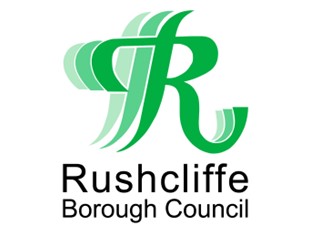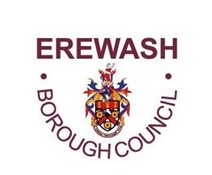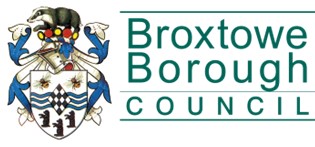Around 74,000 jobs could be created and £4billion added to the East Midlands’ economy if a planned HS2 high speed rail line is routed through the region, says a new report on the major project.
Phase 2 of the national HS2 high speed rail network plans for a western (Crewe to Manchester) and an eastern leg (West Midlands to Leeds). The eastern leg includes a regional HS2 ‘rail hub’ at Toton, Nottinghamshire, (a concept design is pictured here) and a network maintenance depot at Staveley, near Chesterfield; and the western leg (towards Manchester) will bring associated benefits to north Derbyshire.
The Government announced on Tuesday (November 15) it would be taking the Phase 2 proposals forward as its preferred route. Further public consultation will be needed but if the route receives planning permission it could be operational by 2033.
An initial East Midlands HS2 Growth Strategy report – launched today (November 18) – estimates the HS2 plans could create an extra 74,000 jobs in the East Midlands and add £4billion to the region’s economy by 2042, around ten years after trains begin running.
The report has been published by the East Midlands HS2 Strategic Board. Its Board includes more than 30 representatives from the region’s local authorities, businesses, business support organisations and Local Enterprise Partnerships; and is chaired by Nottingham City Council Leader, Councillor Jon Collins.
The East Midlands HS2 Growth Strategy report details what the proposed HS2 regional route could do for the study area, which has a population of 3.15million and contains 109,000 businesses. Advantages laid out in the publication include:
- 74,000 new jobs (both directly related to HS2 and indirectly, such as supply chain companies) in a wide range of sectors; including local rail sector firms but also companies connected with engineering, manufacturing, construction, real estate and logistics.
- Quicker regional rail journeys, as HS2 removes some of the pressure from the current rail network, and faster connections between East Midlands’ cities and main towns and other parts of the UK. For example, Nottingham to London in 68 minutes (current average 104 minutes), Derby to Leeds in 50 minutes (current average 77) and Leicester to Newcastle in 142 minutes (current average 205).
- An HS2 regional ‘rail hub’ at existing rail land at Toton, Nottinghamshire, with four ordinary rail platforms and two high-speed through lines. This would create more than 50 acres of commercial and housing development space, with a new access link road onto the A52. The ‘hub’ would be the most well connected HS2 station outside London, with an expected minimum of seven HS2 trains an hour.
- A regional HS2 maintenance depot at Staveley, five miles north-east of Chesterfield, to serve Midlands’ HS2 lines. This site would also see the remediation of around 150 hectares of brownfield land; to create space for 1,500 homes and 30 hectares of employment land, with the site supporting up to 800 new jobs.
- Potential for enhanced economic benefits, from linking of the HS2 plans for the Chesterfield area into the new proposed growth strategy for northern and central Derbyshire, and Nottinghamshire; and from the increased connectivity this will bring between the area and points east and west.
- Opportunities for passengers to get on/off high-speed services at Chesterfield Station would boost the local economy and increase north Derbyshire’s attractiveness for businesses looking to set-up, expand or relocate.
Following the Government confirmation of the Phase 2 proposals the East Midlands HS2 Strategic Board will now develop this initial Growth Strategy – in consultation with local authorities, businesses and others – before submitting a final version of the report in July 2017. The D2N2 LEP has been awarded a further £625,000 by the Department for Transport for the East Midlands HS2 Strategic Board to develop its work.
Councillor Jon Collins, Leader of Nottingham City Council and Chair of the East Midlands HS2 Strategic Board, said: “Our East Midlands HS2 Growth Strategy report is a work in progress but it shows the scale of regional ambition and commitment, to make the most economically for the East Midlands of a once in a lifetime opportunity.
“We need a clear vision of how we do that, which can only come from the support and input of our area’s businesses, local authorities and communities. Our East Midlands HS2 Strategic Board will be listening closely to all these voices, to ensure the plan we finally submit to Government next year will make sure all benefit from economic gains the proposed HS2 land would create.”
Councillor Anne Western, Leader of Derbyshire County Council and Vice-Chair of East Midlands HS2 Strategic Board, added: “The benefits are clear. Routing HS2 through the East Midlands would boost the local economy, bring more jobs and provide opportunities for local businesses to expand.
“We’re continuing to work with HS2 Ltd to maximise economic benefit, while minimising the disruption to communities; and making sure we get the best possible outcome for Derbyshire residents, businesses and others along the route.”
To read an online copy of the East Midlands HS2 Growth Strategy go to web link www.d2n2lep.org/growth
For more on the work of the East Midlands HS2 Strategic Board see website www.emcouncils.gov.uk/HS2-Strategic-Board and to learn more about the HS2 network see Government website www.gov.uk/government/organisations/high-speed-two-limited
The East Midlands HS2 Strategic Board can be contacted via Andrew Pritchard, Director of Policy & Infrastructure at East Midlands Councils, on 01664 502620 or email: andrew.pritchard@emcouncils.gov.uk





























